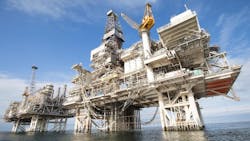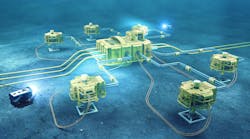bp preparing first Caspian Sea, vessel-based subsea well intervention campaign with Oceaneering and SLB
bp has awarded contracts to SLB and Oceaneering International to support a subsea well intervention campaign at the Azeri-Chirag-Gunashli (ACG) Field in the Azerbaijani sector of the Caspian Sea.
The program, over the Deepwater Gunashli area, is designed to improve production and help maximize recovery from the reservoir, extending its operational lifespan.
It will involve a first-time deployment in bp’s Caspian operations of riserless light well intervention (RLWI) technology, to be performed using Oceaneering’s Blue Ocean Riserless Intervention System (BORIS).
This should provide efficient surveillance and early identification of opportunities for pressure management and enhanced production rates, bp said, potentially revealing further potential in the field.
Another first for the Caspian will be the deployment of vessel-based intervention, with the RLWI system integrated onto and managed from a vessel, probably the subsea construction ship Khankendi.
Oceaneering’s RLWI services work scope will include the setup, assembly and testing of BORIS; project management, engineering and systems integration; and all equipment, materials and fabrication work required for the deployment.
“We believe the RLWI technology – and in particular, the BORIS solution for our DWG wells – will allow us to closely monitor subsea water injection wells and identify the most promising opportunities for reservoir pressure management and production enhancement.
—Russell Morrice, vice president for Azerbaijan, Georgia and Türkiye, bp
The other main contract, for light well intervention (LWI) services, went to SLB. In this case, duties include provision of a wireline/slickline combination (Combo) system to eliminate the need for heavy lifting and simplify red zone management; a full bleed-off package with high-pressure pumping for circulation and pressure testing; and provision of multi-skilled crews.
Offshore operations should start later this year, with completion planned for the end of 2026.

